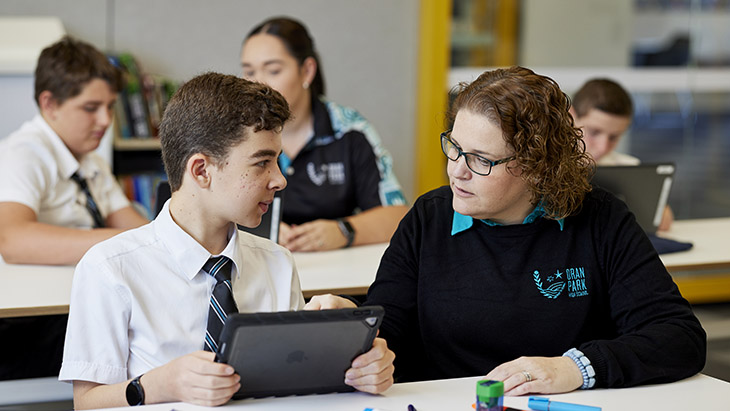What is inclusive education?
Inclusive education means all students, including students with disability, are welcomed by their school and supported to reach their full potential. Inclusion is most effective when schools aim to create a culture that celebrates diversity and builds on the strengths of each student. Inclusive schools nurture professional learning communities that empower teachers to create optimum learning outcomes for students with disability through the use of best practice approaches and current, evidence-based strategies.
The Inclusive Education Statement for students with disability builds on the commitment to inclusive education set out in the Disability Strategy.
Inclusion is about providing equitable access and opportunity to all, and involves removing discrimination and other barriers so that all individuals feel that they belong and are connected. Inclusion creates a learning environment that adapts to each student, rather than expecting students with disability to adapt to the learning environment.
What is an inclusive teacher?
What are disabilities and developmental challenges?

How to be inclusive of all students
Build partnerships with the student and their parents or carers
Building connections with the student and their parents or carers can support inclusion. Work in partnership with students and their parents or carers to identify learning goals, and to create positive strategies to achieve these goals.
If you notice that a student requires support in the classroom you can sensitively discuss this with their family. When talking with family members, focus on the learning task/s the student is finding difficult, as well as the student’s strengths.
Read more about communicating with families in our guide to communicating with parents or carers. Work with the student’s family to develop effective learning strategies and adjustments for their student.
Learn more about Personalised Learning and Support Planning on our transition to secondary school page. Learning and assessment should be meaningful, rigorous and dignified for all students.
If a student struggles with learning tasks or behaviour over a period of time, work with the Learning and Support team to provide support and make adjustments to support participation. Access our information about diagnosis guide.

Learn the basics
You can make a positive difference in a student’s life by providing an inclusive environment. Not sure where to begin? See the basics of inclusion guide for a list of simple things teachers and SLSOs can do to make a difference.
Next, find out more about the language used when talking about a student's disability and how to use strengths-based language that focuses on their strengths, interests and personality traits.
Collaborate with other teachers and staff
Collaboration between colleagues supports positive student education experiences at school. Teachers, SLSOs and other staff working with students with disability and developmental challenges may need to learn new knowledge, skills and try new approaches.
Teachers can support each other in creating more inclusive environments and work out the best ways to tailor the content of their classes. They can talk together about learning plans and strategies that have worked well with students, as well as those that did not.
This way teachers can learn from each other’s experiences and will feel more supported.
Peer mentoring can build a teacher’s skills and confidence. You may consider inviting a classroom teacher who teaches in schools for specific purposes (SSPs) to work with you for a day, or collaborate with allied health professionals to develop the most effective ways to include students with disability in your program.
Teachers can promote and support a whole-school approach to inclusion.
School Excellence Framework alignment
Wellbeing
Australian Professional Standards for Teachers alignment
Standard 1: Know students and how they learn
Audience
Secondary teachers, SLSOs
Purpose
This guide to inclusive education provides an overview of inclusion in NSW public schools.
Reviewed
November 2021. Share your feedback here